
Mui Ne: Vietnam's Serene Beach Paradise
Discover Mui Ne, Vietnam's serene beach paradise, known for its spectacular sand dunes, pristine beaches, and charming fishing villages. A perfect blend of nature and culture awaits.
Nestled along the southeastern coast of Vietnam, Mui Ne is a tranquil beach town known for its stunning sand dunes, serene beaches, and charming fishing villages. This coastal gem offers a perfect blend of natural beauty and vibrant local culture, making it a must-visit destination for any traveler seeking a peaceful escape. Whether you're looking to bask in the sun on its pristine beaches, explore the famous Red and White Sand Dunes, or immerse yourself in local life at the Mui Ne Fishing Village, this town has something for every type of traveler. The sand dunes, often compared to desert landscapes, provide a unique backdrop for activities such as sandboarding and dune bashing, while the beaches offer excellent conditions for water sports like kite surfing and windsurfing. Besides its natural attractions, Mui Ne is also home to the historic Po Shanu Cham Towers, which offer a glimpse into the region's ancient Cham culture. The town's vibrant night market is the perfect place to sample fresh seafood and local delicacies, all while enjoying the warm, welcoming atmosphere that Mui Ne is known for. With its breathtaking scenery and laid-back vibe, Mui Ne is a destination that promises unforgettable experiences.
Local tips in Mui Ne
- Visit the sand dunes early in the morning or late in the afternoon to avoid the heat and capture stunning photos.
- Rent a motorbike to explore Mui Ne at your own pace and discover hidden gems along the way.
- Try kite surfing or windsurfing, as Mui Ne is one of the best spots in Asia for these activities.
- Don't miss the Mui Ne Fishing Village at dawn to see the bustling morning catch and the colorful boats.
- Sample fresh seafood at the local night market, where you can enjoy a variety of dishes at affordable prices.
Mui Ne: Vietnam's Serene Beach Paradise
Nestled along the southeastern coast of Vietnam, Mui Ne is a tranquil beach town known for its stunning sand dunes, serene beaches, and charming fishing villages. This coastal gem offers a perfect blend of natural beauty and vibrant local culture, making it a must-visit destination for any traveler seeking a peaceful escape. Whether you're looking to bask in the sun on its pristine beaches, explore the famous Red and White Sand Dunes, or immerse yourself in local life at the Mui Ne Fishing Village, this town has something for every type of traveler. The sand dunes, often compared to desert landscapes, provide a unique backdrop for activities such as sandboarding and dune bashing, while the beaches offer excellent conditions for water sports like kite surfing and windsurfing. Besides its natural attractions, Mui Ne is also home to the historic Po Shanu Cham Towers, which offer a glimpse into the region's ancient Cham culture. The town's vibrant night market is the perfect place to sample fresh seafood and local delicacies, all while enjoying the warm, welcoming atmosphere that Mui Ne is known for. With its breathtaking scenery and laid-back vibe, Mui Ne is a destination that promises unforgettable experiences.
When is the best time to go to Mui Ne?
Iconic landmarks you can’t miss
Red Sand Dunes
Discover the mesmerizing Red Sand Dunes of Mui Ne, Vietnam, a stunning natural wonder perfect for adventure and photography.

Hòn Rơm 2 Resort
Discover the tranquility and beauty of Hòn Rơm 2 Resort in Phan Thiết, where comfort meets breathtaking ocean views and authentic Vietnamese cuisine.

Muine Bay Resort
Discover the tranquil paradise of Muine Bay Resort, where luxury meets the beauty of Bình Thuận's coastline, offering a perfect retreat for every traveler.

Pandanus Resort
Discover luxury and tranquility at Pandanus Resort, the perfect retreat for relaxation and adventure in Mui Ne, Vietnam's stunning coastal paradise.

Mui Ne Fishing Village Market
Discover the flavors and vibrant culture of Mui Ne at the Fishing Village Market, a seafood lover's paradise nestled on Vietnam's stunning coastline.

Ke Ga Cape
Explore the breathtaking beauty of Ke Ga Cape, Vietnam's coastal gem with stunning landscapes, historic lighthouses, and vibrant local culture.

The Sailing Bay Beach Resort
Discover the tranquil luxury of The Sailing Bay Beach Resort in Mui Ne, where stunning beaches and exceptional hospitality create the perfect getaway.

Sandunes Beach Resort & Spa
Experience the ultimate getaway at Sandunes Beach Resort & Spa in Bình Thuận, Vietnam, where luxury meets nature and unforgettable memories await.

Fairy Stream, Mui Ne
Explore the stunning Fairy Stream in Mui Ne, where vibrant sand dunes meet tranquil waters, offering a unique escape into Vietnam's natural beauty.

White Sand Dunes
Experience the breathtaking beauty and adventure of the White Sand Dunes in Binh Thuan, Vietnam - a must-visit destination for every traveler.

Muine Fishing Village
Experience the vibrant culture and stunning scenery of Muine Fishing Village, a hidden gem on Vietnam's coast known for its fishing heritage and delicious seafood.

Hanna Beach
Discover the beauty and charm of Hanna Beach, a public paradise in Phan Thiết, Vietnam, perfect for relaxation and vibrant local culture.

Làng Chài Quán
Discover the culinary gem of Phan Thiết at Làng Chài Quán, where fresh seafood meets authentic Vietnamese flavors in a stunning coastal setting.

Muine de Century Resort & Spa
Experience luxury and tranquility at Muine de Century Resort & Spa, a stunning coastal haven in Vietnam perfect for relaxation and adventure.

LongSon MuiNe Beach Campground Resort
Experience the perfect blend of relaxation and adventure at LongSon MuiNe Beach Campground Resort, where stunning views and nature await you.

Unmissable attractions to see
Lâu đài rượu vang RD Phan Thiết - Mũi Né
Explore the enchanting Lâu đài rượu vang RD Phan Thiết - Mũi Né, a stunning winery in Vietnam, offering exquisite wine tastings and breathtaking vineyard views.
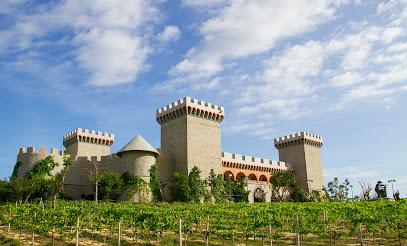
Doi Duong Beach
Experience the beauty of Doi Duong Beach in Phan Thiet, Vietnam—where golden sands meet vibrant culture and endless adventure.

Bãi đá Ông Địa
Discover the serene beauty of Bãi Đá Ông Địa, a stunning beach in Phan Thiết, Vietnam, ideal for relaxation and adventure.

White Sand Dunes
Explore the breathtaking White Sand Dunes of Bình Thuận, Vietnam - a natural wonder with stunning landscapes and thrilling adventures.

Van Thuy Tu Temple
Discover the spiritual and cultural essence of Phan Thiet at Van Thuy Tu Temple, a historic site dedicated to the worship of the sea god.
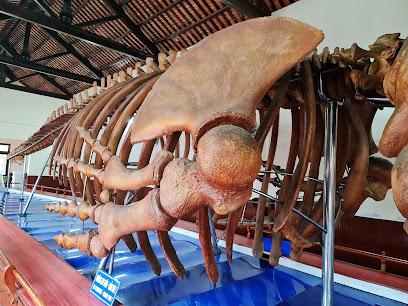
Van Thuy Tu Temple
Explore the historical and spiritual heart of Phan Thiết at Van Thuy Tu Temple, a serene sanctuary dedicated to the sea god.

Lotus Muine Resort & Spa
Discover tranquility and luxury at Lotus Muine Resort & Spa, your ultimate health resort destination in Phan Thiết, Vietnam.

Tà Cú Mountain
Explore Tà Cú Mountain in Bình Thuận, Vietnam: A stunning blend of nature and spirituality awaits you at this breathtaking peak.

Bảo tàng nước mắm Làng Chài Xưa - Fish Sauce Museum
Explore the rich history of fish sauce at the Fish Sauce Museum in Phan Thiết, Vietnam, and dive into the heart of Vietnamese culinary traditions.

Mui Ne Beach
Discover the enchanting Mui Ne Beach in Vietnam, where stunning landscapes meet rich culture and thrilling water sports await.

Vita Garden Mini-Zoo
Explore Vita Garden Mini-Zoo in Phan Thiet, Vietnam—a family-friendly oasis teeming with exotic animals and lush landscapes.

Red Canyon
Explore the stunning landscapes of Red Canyon, a hidden gem in Phan Thiết, Binh Thuận, Vietnam, perfect for nature lovers and adventure seekers.

Red Canyon
Discover the breathtaking beauty of Red Canyon in Bình Thuận, Vietnam, a must-visit natural attraction for nature lovers and adventure seekers.

Fishermen Show Theatre - Huyền Thoại Làng Chài
Discover the vibrant culture of Vietnam at the Fishermen Show Theatre in Mui Ne, where captivating performances bring local folklore to life.

Hòn Rơm
Experience the serene beauty of Hòn Rơm, a hidden beach paradise near Mui Ne, featuring stunning landscapes and vibrant local culture.
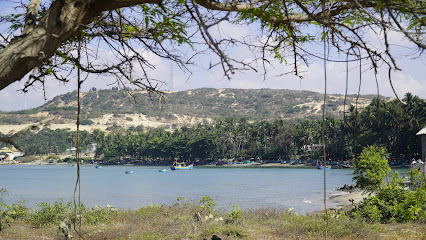
Essential places to dine
Làng Chài Quán
Discover authentic Vietnamese seafood at Làng Chài Quán in Mũi Né - where fresh flavors meet stunning ocean views.

Vien Phuong Restaurant
Experience the best seafood and Asian cuisine at Vien Phuong Restaurant in Mũi Né - where fresh flavors meet vibrant culture.

Fishing Village Hotel & Restaurant
Experience authentic seafood cuisine and stunning ocean views at Fishing Village Hotel & Restaurant in Mũi Né.

PHỐ MŨI NÉ - CƠM NIÊU HẢI SẢN TƯƠI SỐNG
Experience the freshest seafood and authentic Vietnamese flavors at Cơm Niêu Hải Sản Tươi Sống in stunning Mũi Né.
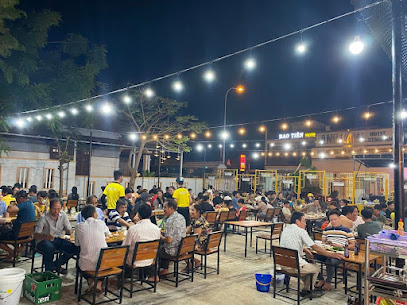
Phố Làng Chài
Discover Phố Làng Chài in Mũi Né - A must-visit seafood destination offering fresh flavors and stunning coastal views.

Long Son Mui Ne Exotic Restaurants & Bar
Discover authentic Vietnamese flavors at Long Son Mui Ne Exotic Restaurants & Bar in Phan Thiết – a culinary haven by the sea.

Trinh Restaurant
Experience authentic Vietnamese cuisine at Trinh Restaurant in Mũi Né - a delightful culinary journey awaits every visitor.
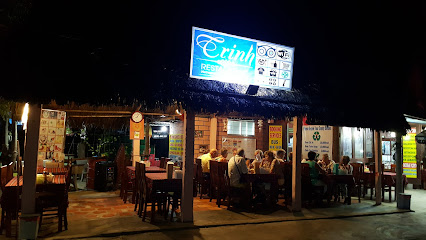
Sáu Thanh Quán
Discover authentic Vietnamese flavors at Sáu Thanh Quán in Mũi Né—where every dish tells a story.

Nhà Hàng Cây Nhãn
Experience authentic Vietnamese cuisine at Nhà Hàng Cây Nhãn in Mũi Né – where every dish tells a story.
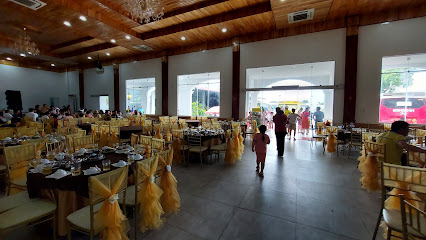
Nhà Hàng Anh Em
Discover authentic Vietnamese cuisine at Nhà Hàng Anh Em in Mũi Né - where every dish tells a story.

Mũi Né Home
Discover fresh seafood delights at Mũi Né Home, where ocean views meet authentic Vietnamese flavors in a charming coastal setting.
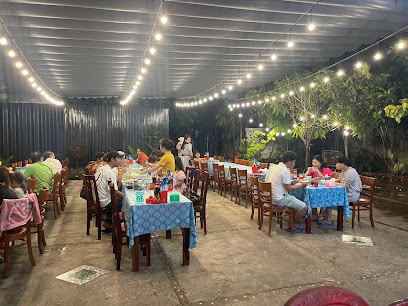
Quan Ben Tau Mui Ne
Discover authentic Vietnamese flavors at Quan Ben Tau Mui Ne - a culinary haven in the heart of Mũi Né's beautiful coastline.

Chả Lụi Hàm Tân
Experience authentic Vietnamese flavors at Chả Lụi Hàm Tân in Mũi Né – home to delicious grilled pork skewers and warm hospitality.

Nhà hàng Xuân Phát
Experience authentic Vietnamese cuisine at Nhà hàng Xuân Phát in Mũi Né - where every dish tells a story.
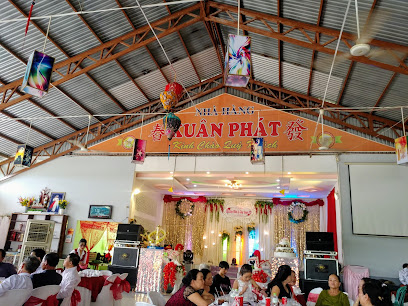
Café Blue Lagoon Restaurant
Experience exquisite dining at Café Blue Lagoon Restaurant in Mũi Né – where local flavors meet breathtaking ocean views.

Markets, malls and hidden boutiques
Dua Xanh Coconut Mart
Explore unique gifts and local treasures at Dua Xanh Coconut Mart in Mui Ne, a vibrant destination for memorable souvenirs and cultural experiences.

Mui Ne Village Market
Discover the vibrant Mui Ne Village Market, where local culture, flavors, and unique souvenirs come together in the heart of Vietnam.

Coconut art
Discover the charm of traditional Vietnamese craftsmanship at Coconut Art in Mũi Né, where unique coconut shell crafts await every traveler.

Thợ Săn 2Hand
Discover unique vintage clothing and accessories at Thợ Săn 2Hand, a premier used clothing store in the vibrant Mũi Né district of Vietnam.
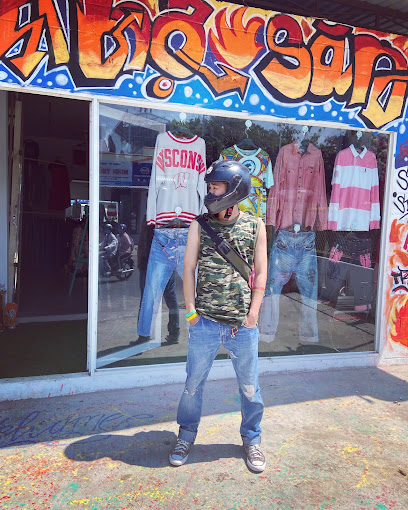
Quán chú 10
Discover authentic Vietnamese flavors and local produce at Quán Chú 10, Mũi Né's beloved grocery store offering a taste of local life.

BHG MART.COM
Discover Mũi Né's vibrant shopping experience at BHG MART.COM, where local culture meets convenience and variety.

Toro Store
Explore Toro Store in Mũi Né: A treasure trove of authentic Vietnamese crafts, textiles, and culinary delights awaits your discovery.

Song Vu Wine Oven
Explore the finest selection of local and international wines at Song Vu Wine Oven in the heart of Mũi Né.

Shop Phụ Kiện Đỗ Quyên
Explore the vibrant electronics at Shop Phụ Kiện Đỗ Quyên in Mũi Né, Vietnam, where unique gadgets and local charm meet.

Mama Store
Explore Mama Store in Mũi Né for trendy clothing and unique fashion that captures the essence of Vietnamese culture and style.

Sau Tri Fashion Shop
Discover unique styles at Sau Tri Fashion Shop, the ultimate destination for women's clothing in the heart of Mũi Né, Vietnam.
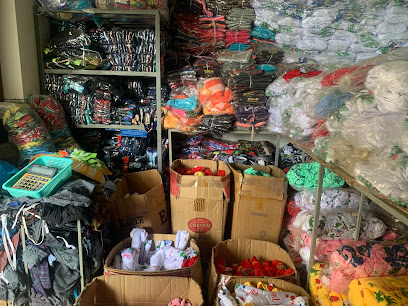
Shop gia linh
Experience the vibrant fashion of Mũi Né at Shop Gia Linh, where unique clothing and accessories await every traveler.

Shop Duy Khang
Explore the vibrant fashion scene at Shop Duy Khang in Mũi Né, offering unique accessories that reflect the beauty of Vietnamese culture.

Cửa hàng Smart home Xuân Truong
Explore Smart Home Xuân Truong in Mũi Né: A boutique that fuses innovative technology with Vietnamese charm, perfect for tech enthusiasts and travelers alike.

TIỆM NÔNG CƠ 99
Explore the vibrant essence of Mũi Né at TIỆM NÔNG CƠ 99, your go-to destination for local products and unique souvenirs.

Essential bars & hidden hideouts
Joe's Cafe Muine
Discover the lively atmosphere and delicious fusion cuisine at Joe's Cafe Muine in Phan Thiết, the perfect spot for relaxation and socializing.

Dragon Beach - Lounge Bar & Club
Experience vibrant nightlife and stunning ocean views at Dragon Beach - Lounge Bar & Club in Phan Thiết, a must-visit destination for every traveler.

Pineapple Mũi Né
Discover the vibrant atmosphere and refreshing cocktails at Pineapple Mũi Né, the ultimate tropical bar destination in beautiful Mũi Né, Vietnam.

Nirvana Beach Club
Experience the vibrant nightlife at Nirvana Beach Club, a tropical cocktail bar in Phan Thiết, Vietnam, with diverse entertainment options by the beach.

Chill Out Bar & Burger House Mui Ne
Discover the vibrant Chill Out Bar & Burger House in Mui Ne, where delicious burgers meet refreshing cocktails in a beachside paradise.

Long Son Mui Ne Exotic Restaurants & Bar
Discover delightful culinary experiences at Long Son Mui Ne Exotic Restaurants & Bar, where local flavors meet vibrant ambiance in stunning coastal surroundings.

Sunset Quán ( restaurant and coffee )
Experience the flavors of Vietnam at Sunset Quán, a bistro offering breathtaking views and exceptional dining in Mũi Né.

NEMO Beach Bar - Mui Ne
Experience the ultimate beachside retreat at NEMO Beach Bar in Mui Ne, where stunning sunsets and refreshing cocktails await.
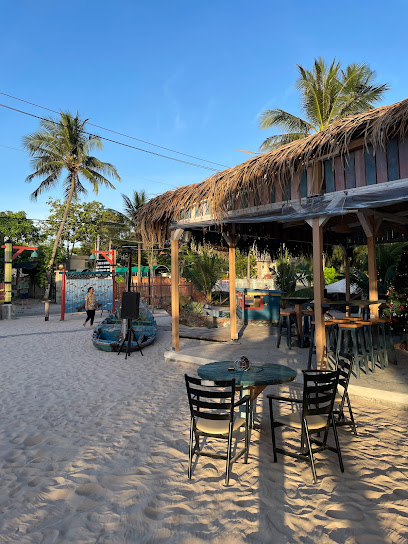
Karaoke Music World
Discover the vibrant atmosphere of Karaoke Music World in Mũi Né, where music and laughter create unforgettable memories for every visitor.

Blackbird Muine
Experience the vibrant energy of Blackbird Muine, a cocktail and espresso bar in Phan Thiết, where exquisite drinks meet a stylish atmosphere.

Karaoke Apple
Experience the vibrant nightlife of Mũi Né at Karaoke Apple, where you can sing your heart out in a fun and welcoming atmosphere.

Sit & Sip - Eatery and Bar MuiNe
Discover the ultimate cocktail experience at Sit & Sip, Mui Ne's top spot for handcrafted drinks and a relaxing atmosphere.
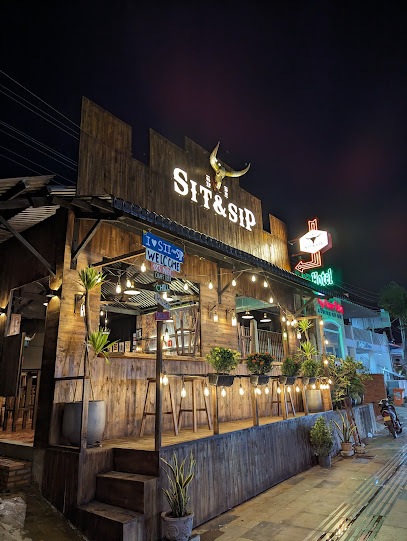
Jibe's Beach Club - Suoi Nuoc
Experience the ultimate beach getaway at Jibe's Beach Club - Suoi Nuoc, where relaxation meets adventure on the stunning shores of Bình Thuận.

Quán Ăn Minh Jun
Discover the vibrant flavors of Vietnam at Quán Ăn Minh Jun, a delightful food court and brewpub in Phan Thiết, perfect for all food lovers.

Kingston hut mui ne
Discover Kingston Hut in Mui Ne: A vibrant bar offering delicious drinks and an unforgettable nightlife experience amidst Vietnam's stunning coastline.

Local Phrases
-
- HelloXin chào
[Sin chow] - GoodbyeTạm biệt
[Tahm byet] - YesCó
[Kaw] - NoKhông
[Khom] - Please/You're welcomeXin vui lòng
[Sin vui long] - Thank youCám ơn
[Kam un] - Excuse me/SorryXin lỗi
[Sin loy] - How are you?Bạn khỏe không?
[Ban kwee khom?] - Fine. And you?Khỏe. Còn bạn?
[Kwee. Kon ban?] - Do you speak English?Bạn có nói tiếng Anh không?
[Ban kaw noy ting ang khom?] - I don't understandTôi không hiểu
[Toy khom hyeu]
- HelloXin chào
-
- I'd like to see the menu, pleaseTôi muốn xem thực đơn, vui lòng
[Toy mun sem tuk don, vui long] - I don't eat meatTôi không ăn thịt
[Toy khom un tit] - Cheers!Chúc sức khỏe!
[Chook sook kwee] - I would like to pay, pleaseTôi muốn thanh toán, vui lòng
[Toy mun thanh toan, vui long]
- I'd like to see the menu, pleaseTôi muốn xem thực đơn, vui lòng
-
- Help!Cứu!
[Kew] - Go away!Đi đi!
[Dee dee] - Call the Police!Gọi cảnh sát!
[Goi keng sat] - Call a doctor!Gọi bác sĩ!
[Goi bac si] - I'm lostTôi bị lạc
[Toy bee lak] - I'm illTôi ốm
[Toy om]
- Help!Cứu!
-
- I'd like to buy...Tôi muốn mua...
[Toy mun mwa] - I'm just lookingTôi chỉ xem thôi
[Toy chi sem toy] - How much is it?Bao nhiêu tiền?
[Bao nyew tien?] - That's too expensiveĐắt quá
[Dat kwa] - Can you lower the price?Bạn có thể giảm giá không?
[Ban kaw te zam zia khom?]
- I'd like to buy...Tôi muốn mua...
-
- What time is it?Bây giờ là mấy giờ?
[Bay zoi la may zoi?] - It's one o'clockMột giờ
[Mote zoi] - Half past (10)Mười giờ rưỡi
[Moo-ee zoi ruoi] - MorningBuổi sáng
[Boo-ee sang] - AfternoonBuổi chiều
[Boo-ee chieu] - EveningBuổi tối
[Boo-ee toy] - YesterdayHôm qua
[Hom kwa] - TodayHôm nay
[Hom nai] - TomorrowNgày mai
[Nai my] - 1Một
[Mote] - 2Hai
[High] - 3Ba
[Ba] - 4Bốn
[Bon] - 5Năm
[Nam] - 6Sáu
[Sow] - 7Bảy
[Bye] - 8Tám
[Tum] - 9Chín
[Chin] - 10Mười
[Moo-ee]
- What time is it?Bây giờ là mấy giờ?
-
- Where's a/the...?Chỗ...ở đâu?
[Cho...uh dow?] - What's the address?Địa chỉ là gì?
[Dee-uh chee la zee?] - Can you show me (on the map)?Bạn có thể chỉ cho tôi (trên bản đồ) không?
[Ban kaw te chee cho toy (trun ban do) khom?] - When's the next (bus)?Khi nào là chuyến xe buýt tiếp theo?
[Kee now la chuyen se but ting chee-ep theo?] - A ticket (to ....)Một vé (đi ...)
[Mote vee (dee ...)]
- Where's a/the...?Chỗ...ở đâu?
History of Mui Ne
-
Mui Ne's history can be traced back to the ancient Cham Kingdom, which ruled the central and southern parts of Vietnam from the 2nd to the 15th century. The Cham people, known for their mastery in maritime trade and Hindu-Buddhist influenced culture, left significant marks in the region. Evidence of Cham architecture and artifacts can still be found in the area, showcasing their unique cultural heritage.
-
According to local legend, Mui Ne was named after a Cham princess who was saved from a storm by a local prince. To honor the heroic act, she named the cape 'Mui Ne,' which translates to 'Shelter Cape.' This legend adds a layer of romantic mystique to the area's cultural tapestry.
-
During the late 19th and early 20th centuries, Mui Ne, like much of Vietnam, fell under French colonial rule. The French influence is evident in some of the architectural styles in the region. This period also saw the development of infrastructure that would pave the way for Mui Ne's emergence as a tourist destination.
-
The Vietnam War had a significant impact on Mui Ne and the surrounding areas. The region saw military activity and the presence of both Vietnamese and American forces. Post-war, the area began to rebuild and slowly transition towards peace and development.
-
In the late 20th century, Mui Ne started transforming into a popular tourist destination. The discovery of its natural beauty, including the famous sand dunes and pristine beaches, attracted both local and international visitors. Investments in resorts and hospitality services boosted the region's economy and turned Mui Ne into a must-visit spot in Vietnam.
-
Mui Ne is home to various cultural festivals and traditions that reflect its rich heritage. The Kate Festival, celebrated by the Cham people, is one such event where traditional music, dance, and rituals are performed. These festivals provide a glimpse into the local customs and keep the cultural spirit of Mui Ne alive.
Mui Ne Essentials
-
Mui Ne is located in the Binh Thuan Province of Vietnam, approximately 200 kilometers east of Ho Chi Minh City. The nearest major airport is Tan Son Nhat International Airport in Ho Chi Minh City. From the airport, you can take a bus, train, or private car to Mui Ne. Buses and trains are available from Ho Chi Minh City to Phan Thiet, which is about 22 kilometers from Mui Ne. From Phan Thiet, you can take a taxi or local bus to reach Mui Ne.
-
Mui Ne is a relatively small area, and many of its attractions are accessible by foot or bicycle. Motorbike rentals are a popular and convenient way to explore the area. Taxis and ride-hailing services like Grab are also available. For longer distances, you can use local buses that connect Mui Ne with Phan Thiet and other nearby towns.
-
The official currency in Vietnam is the Vietnamese Dong (VND). Credit cards are accepted in many hotels, restaurants, and larger shops, but it is advisable to carry cash for smaller establishments and local markets. ATMs are widely available in Mui Ne, so withdrawing cash is convenient. It's a good idea to have some small denominations for tips and small purchases.
-
Mui Ne is generally a safe destination for tourists. However, it's wise to take standard precautions such as avoiding poorly lit areas at night and keeping an eye on your belongings in crowded places. Petty crime like pickpocketing can occur, especially in busy tourist areas. There are no specific high-crime neighborhoods, but always stay vigilant and aware of your surroundings.
-
In case of an emergency, dial 113 for police, 114 for fire, and 115 for medical assistance. It's recommended to have travel insurance that covers medical emergencies. There are several hospitals and clinics in Phan Thiet, which is a short drive from Mui Ne. Pharmacies are also available for over-the-counter medications.
-
Fashion: Do dress conservatively, especially when visiting temples or local homes. Avoid wearing overly revealing clothing. Religion: Do respect local customs and traditions. Remove your shoes before entering temples and dress modestly. Public Transport: Do be mindful of your belongings and offer your seat to elderly passengers. Don't eat or drink on public transport. Greetings: Do greet people with a smile or a slight bow. A handshake is also acceptable. Eating & Drinking: Do try local seafood delicacies and street food. Don't refuse food or drink offerings as it can be considered impolite.
-
To experience Mui Ne like a local, visit the Mui Ne Fishing Village early in the morning to see the fishermen bring in their catch. Explore the local markets where you can buy fresh produce and local handicrafts. Renting a motorbike can give you the freedom to explore less touristy areas. Don't miss the Red and White Sand Dunes, which offer stunning landscapes and opportunities for sandboarding. Engage with locals; they are often friendly and willing to share tips about the area.
Trending Landmark in Mui Ne
-
Red Sand Dunes
-
Hòn Rơm 2 Resort
-
Muine Bay Resort
-
Pandanus Resort
-
Mui Ne Fishing Village Market
-
Ke Ga Cape
-
The Sailing Bay Beach Resort
-
Sandunes Beach Resort & Spa
-
Fairy Stream, Mui Ne
-
White Sand Dunes
-
Muine Fishing Village
-
Hanna Beach
-
Làng Chài Quán
-
Muine de Century Resort & Spa
-
LongSon MuiNe Beach Campground Resort
Nearby Cities to Mui Ne
-
Things To Do in Phan Thiet
-
Things To Do in Dalat
-
Things To Do in Vung Tau
-
Things To Do in Nha Trang
-
Things To Do in Ho Chi Minh City
-
Things To Do in Buon Ma Thuot
-
Things To Do in Can Tho
-
Things To Do in Kratie
-
Things To Do in Quy Nhon
-
Things To Do in Phnom Penh
-
Things To Do in Kep
-
Things To Do in Kampot
-
Things To Do in Phu Quoc
-
Things To Do in Sihanoukville
-
Things To Do in Champasak











